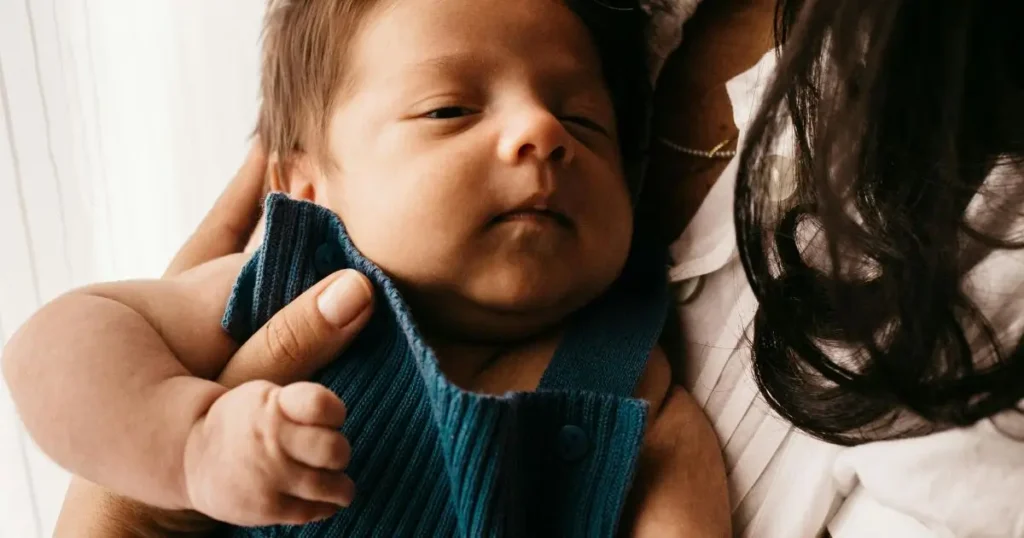When you see a newborn draw their legs up close to their body by bending their knees, it may appear as an instinctive reaction. Yet, this action, commonly known as the newborn scrunch, is really a systemic feature of a baby’s life early on. Hence, we are going to look into the newborn scrunch,: its science, reasons behind its execution by babies, and the ways the latter benefit in terms of growth and comfort as a result.
Table of Contents
What Is the Newborn Scrunch?
The newborn scrunch becomes evident at that age of infancy within the first weeks. This is whereby the baby’s knees are pulled towards the chest curling the legs right up towards the abdomen-fetal position. Although it may look like a random move, this actually serves important functions for the dual physical and neurological development of the newborn.

The Anatomy of the Newborn Scrunch
Muscles and joints are still forming in babies in the first few months. The scrunch that is seen in a newborn is mostly the result of the maturing nervous system of the infant and the reflexes that babies have in their life. These movements are mainly t< to the reflexes, like the tonic neck reflex and the Moro reflex, common in newborns. The tonic neck reflex makes the baby turn its head and arch one side of its body; this may also make the legs scrunch.
Why Do Babies Curl Up Their Legs?
Babies curl and hug their legs for several reasons in the newborn scrunch. From comfort and instinct to reasons of physiological development, it may range as follows:
1. Comfort and Security
The primary reason why babies curl their legs up is that it feels comfortable. They were inside the womb curled up in a compact fotalike for how many months. After birth, they derive comfort by curling up in this position, which now becomes safe and familiar. It may help them feel secure as they need to adjust to the outside world.
2. Reflexes and Development
Newborns also come with a bag full of reflexes that evoke the responses of voluntary movements. For example, the Moro reflex would make them react to sudden stimuli by arching their backs and curling up their legs. It is the rooting reflex, another common reflex in newborns, who would draw their legs up while scrunching for comfort as well as looking for nourishment.
3. Muscular Development
The newborn scrunch can help with early muscular development since babies are still developing their muscles and joints in their early months. Curling up legs would help to activate certain muscle groups so that babies could have strength in their core and lower body, which is essential for future milestones.
4. Digestive Comfort
Most babies draw up their legs if they have some gas or a poorly tummy. This helps them feel better and lets the wind move out. Babies move in a way that helps take the pain away, and the newborn scrunch is one of the main ways they may react to tummy troubles.
5. Instinctual Movements
Just like many animal species, newborns are born with instinctual behaviors that help them survive and thrive. The newborn scrunch can be seen as part of this instinctual movement pattern that enables babies to self-soothe, relax, and strengthen their bodies in preparation for future milestones.
When Should You Be Concerned About the Newborn Scrunch?
Although the scrunch that newborns do is quite normal and there is nothing to worry about, one should keep in mind a few conditions where it may be related to other developmental anomalies. If your baby keeps scrunching up his legs too much or seems to be in pain, it may be digestive discomfort, gas, or colic. In other cases, the tightness of the scrunch in a newborn may indicate some other concern like stiffness in muscles or maybe some neurological issue.
That’s what your pediatrician is there for so if you are in doubt, just go and talk to him; he will be able to examine the baby and gauge the baby’s health and development.
How to Help Your Baby with the Newborn Scrunch
Here are some ways you can try to help the newborn scrunch feel better or not seem as much of a struggle for your little one to do:
1. Gentle Tummy Massage
Help to relieve any trapped air or gas that may be causing some discomfort to your baby through a gentle tummy massage. Also, it can help release their muscles, hence lessening the newborn scrunch in frequency.
2. Bicycle Legs Exercise
Gently move your baby’s legs as if pedaling a bicycle so gas will be relieved and his belly won’t be hurting so much. It helps in adding motion to this motion and achieving higher efficacy in terms of calming it.
3. Swaddling
Wrapping Wrapping your baby with a soft, tight blanket can help generate the sense of ease and comfort that he was getting while inside the womb. This at times may cut the times of scrunching too much and make your baby calm.

Embracing the Newborn Scrunch
The newborn scrunch is natural and instinctual, serving multifunctional purposes in the development of your baby. It provides comfort and security while being an active part of the muscular growth and digestive health of the infant. The parent or caregiver should embrace the scrunch for what it truly is, that is, a very normal and very beneficial development. If the baby appears uncomfortable or shows distress along with the scrunch, always reach out to a pediatrician.
Understanding why babies curl up their legs will help you decode this behavior and reinforce the importance of the early stages of your baby’s development. By supporting them, you can help your little one grow stronger, healthier, and more comfortable during these formative months and more formative months ahe…
